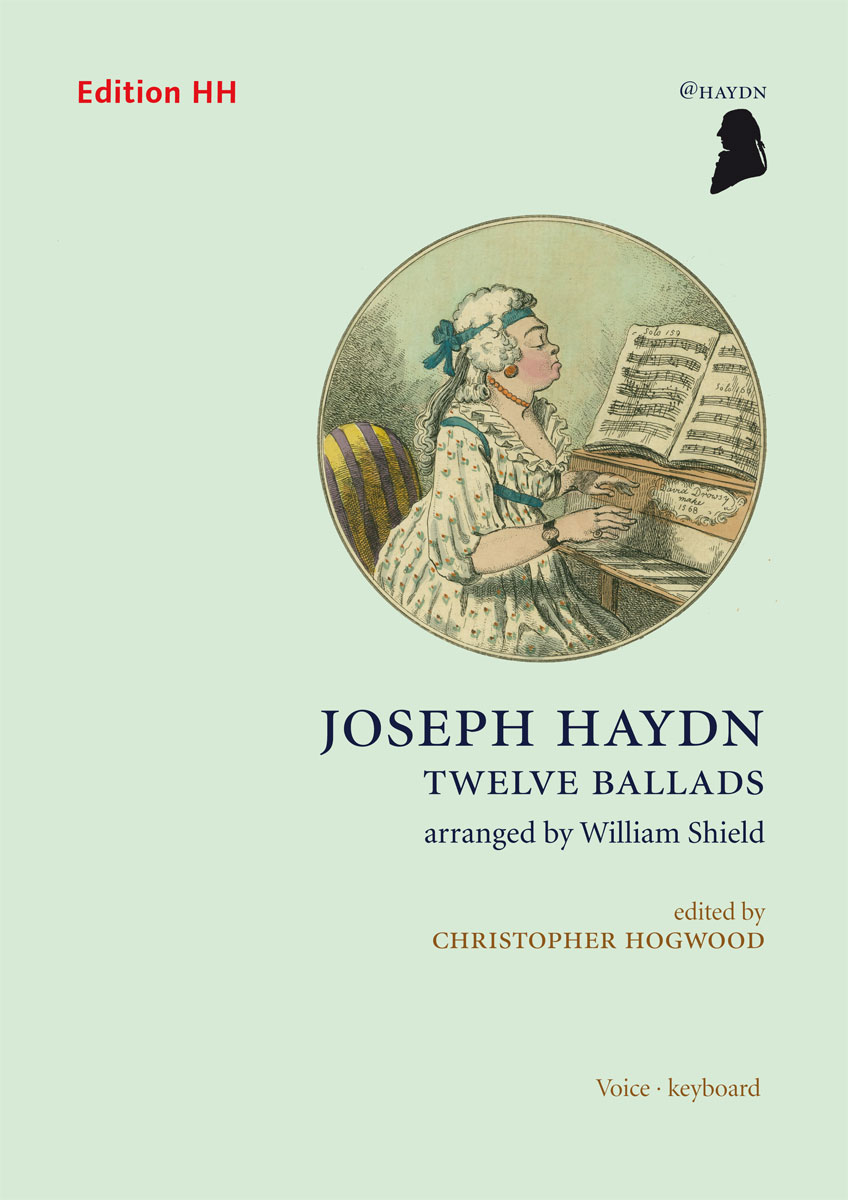|

Joseph Haydn Twelve Ballads, arr. William Shield
ed. CHRISTOPHER HOGWOOD
Edition HH, @HAYDN series, hh192.fsc, Launton, 2013 (pbk, £14.50)
ISMN 979 0 708059 70 7
www.editionhh.co.uk
With the ready availability of digital images of original sources in online databases such as imslp.org, one might ask about the purpose to be served by a new critical edition of this collection – especially when the print serving as the principal source of the edition is as clearly legible and apparently user-friendly as the Twelve Ballads […](Haydn arr. William Shield, RISM H 2629). Christopher Hogwood’s clear and concise introduction, given in English and German, soon elucidates the reasons.
The early publication history of the Twelve Ballads is as interesting as it is convoluted. Due to the popularity of Haydn’s music, English publishers issued many of his works, often in arrangements for domestic use; indeed, works by other composers were sometimes falsely passed off as being by Haydn. The originals for the Twelve Ballads were the XII Lieder für das Clavier, published in Vienna in 1781 (RISM H 2617), and used by Hogwood as his second source. The English arranger William Shield (1748-1829) changed the ordering of the songs and provided English versions of the German poems.
This sometimes led to an entertaining situation: two of the German texts are themselves based on English poems; thus, Shield’s versions are re-translations of translations. Hogwood provides the originals of these two poems in the introduction, and makes some suggestions as to how they might be adapted to Haydn’s melodies by a performer. Otherwise, he has preserved the original spellings of the texts and added ‘a minimum of punctuation’ for clarity.
Hogwood has chosen to transcribe the original 2-stave notation into the now conventional 3-stave notation for singer and accompaniment. This means that the vocal part, complete with ornaments, is reproduced in the top staff of the accompaniment. The accompanist, as he explains, is not obliged to shadow the singer exactly, especially with regard to improvised ornamentation. He also explains that the original generally used smaller notes to distinguish accompanying parts from the melody; providing an extra staff makes this unnecessary.
The second source (XII Lieder) has been used predominantly to supplement details such as some dynamic markings and details of phrasing, articulation, accidentals, and repeats; Hogwood explains the approach behind his decisions, and provides a detailed critical commentary. Editorial additions are marked in the usual way by square brackets, small symbols, or dotted lines for e.g. slurs; occasional rhythmic variants are given above the staff. The resulting typesetting is clean and uncluttered; only two of the songs require page turns, which are in logical places for the accompanist.
Pages which otherwise might have been empty with this arrangement are filled with facsimile images from both sources. These are referenced in the introduction, and effectively illustrate Hogwood’s points. The cover illustration, an amusing cartoon by Isaac Cruikshank dated 1796, underlines the domestic performance purpose of the collection: an amply-proportioned country girl is about to perpetrate an attack (in the form of some keyboard solos) on a harpsichord of venerable age and delicate construction.
These English arrangements of the XII Lieder do not appear in the complete edition of Haydn’s works (the German songs are to be found in Series 29, vol.1, ed. Paul Mies), nor are they explicitly referenced in Mies and Marianne Helms’s revisions (Munich: G Henle Verlag, 1982). In fact, Hogwood’s work is the first modern edition of the English versions. The attractive typesetting, the informative and detailed introduction and critical apparatus, and the sympathetic approach to amending the first edition from the original German, all combine to make this a valuable addition to the catalogue.
Not only will it be useful to historically-informed performers interested in domestic music-making in the late 18th century, but it may encourage English-speaking students and amateurs to explore a new corner of the repertoire, incidentally helping to restore this music to the informal performance context for which it was originally published.
We are grateful to theThe Consort for permission to reproduce this review.
|
